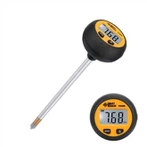Introduction to Night Vision and Optoelectronic Technology
Night vision goggles, also known as night vision glasses, night vision telescopes, and infrared telescopes, are an instrument for observing in total darkness or at night with low light. They were first used in the military. Later, it was widely used in various fields such as criminal investigation, security, forest fire prevention, power and communication line patrol, construction sites, breeding farms, farm care, and even tourism. After half a century of development, night vision devices can be roughly divided into several types:
1. Low-light night vision technology, also known as image intensification technology, is a photoelectric imaging technology that uses night vision goggles with image intensification tubes to enhance target images illuminated by weak light for observation. Low-light night vision equipment is currently the most produced and widely used night vision equipment in foreign countries. It can be divided into two types: direct observation and indirect observation.
2. Infrared night vision technology is divided into two types: active and passive. Active infrared night vision technology is a night vision technology that uses active irradiation and uses the infrared light of the target to reflect the infrared source to observe. The corresponding equipment is an active infrared night vision device. Although active infrared night vision technology has the characteristics of clear imaging and simple production, it also has a fatal weakness: on the battlefield, the infrared light of the infrared follower lamp will be detected by the enemy's infrared detection device. This weakness undoubtedly declares the fate of active infrared night vision technology to be eliminated. Passive infrared night vision technology is an infrared technology that relies on the infrared radiation emitted by the target itself to achieve observation. Simply put, it images based on different temperatures. The resolution is very low, but it has its special uses.
3. Some night vision devices have improved the semiconductor material of the photocathode, making them sensitive to both low light and infrared. The infrared night vision device and the low light night vision device are unified into one instrument, and the low light night vision can be activated at night on a clear day. It emits infrared rays at night in rainy and foggy days to act as an active infrared night vision device, and its range is farther than a simple passive low-light night vision device.






